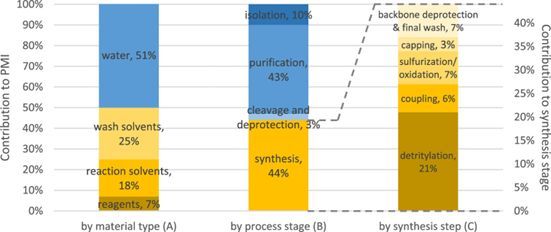Oligonucleotides
Oligonucleotides are a novel class of therapeutic molecule for the treatment of a wide variety of diseases. They are short pieces of modified DNA, typically around 20 nucleotides in length. Typical oligonucleotide manufacturing processes have a significant environmental cost in terms of waste, chemical hazards, and energy efficiency, and this burden will only grow as volumes of therapeutic oligonucleotides increase. Recently, the emphasis on integrating green chemistry and engineering principles into oligonucleotide production has increased, with a growing focus on environmentally friendly oligonucleotide manufacture within the pharmaceutical industry.
The ACS Green Chemistry Institute Pharmaceutical Roundtable recognized the pressing need for the development of more environmentally sustainable oligonucleotide API processes. Consequently, a new Roundtable focus team was established in 2018 to specifically address this critical area. In a recent perspective publication (DOI: 1021/acs.joc.0c02291), the team focused on greener oligonucleotide processing, outlining the current sustainability challenges and opportunities in manufacturing, proposing potential solutions. This Roundtable team endeavors to promote collaboration among academia, the pharmaceutical industry, and contract research/manufacturing organizations. Their goal is to share the best practices and the investigation of innovative synthetic & process development approaches aimed at reducing the environmental footprint associated with current oligonucleotide manufacture.

Contribution to PMI by material type stage and process step. Image Credit: DOI: 1021/acs.joc.0c02291